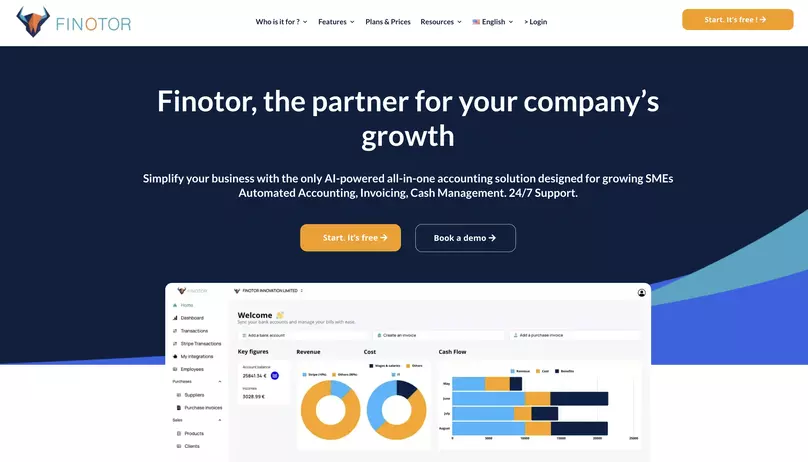Contents
- 1 Understanding Gross Profit Basics
- 2 Calculating Gross Profit Step by Step
- 3 Improving Gross Profit Margins
- 4 Utilizing Gross Profit Insights for Better Decision Making
- 5 Improving Gross Profit Margins
- 6 Utilizing Gross Profit Insights for Better Decision Making
- 7 Improving Gross Profit Margins
- 8 Utilizing Gross Profit Insights for Better Decision Making
Understanding Gross Profit Basics
Defining Gross Profit in Business
Gross profit is a critical financial metric that represents the difference between revenue and the cost of goods sold (COGS). It’s a measure of a company’s efficiency at using its labor and supplies in the production process. In its simplest form, it serves as the income left over after all direct costs associated with producing goods have been subtracted from sales revenue. Understanding this concept is essential for evaluating a business’s ability to generate income from its core operations. To delve deeper into the definition of gross profit, you can refer to resources like Investopedia.
The Importance of Gross Profit for Financial Health
Gross profit plays a pivotal role in the financial health of a business. It’s a clear indicator of the company’s profitability, highlighting whether a business is selling its products at a price that covers the costs and leaves a surplus. This surplus is vital as it helps cover other operating expenses and contributes to net profits. A healthy gross profit margin can signal a sustainable business, while consistently low margins may indicate potential financial troubles ahead.
Difference Between Gross Profit and Net Profit
While gross profit represents the income remaining after COGS is deducted, net profit—or net income—is the amount left after all expenses, including operating expenses, taxes, interest, and depreciation, are accounted for. It is the ultimate profitability measure, reflecting the total earnings after all aspects of the business operations have been paid. Understanding the difference between gross and net profit is crucial for business owners and investors as it helps them pinpoint where costs can be optimized and how the business can become more profitable. For an in-depth example of these calculations, American Express offers a practical guide.
Calculating Gross Profit Step by Step
Gathering the Necessary Financial Data
The first step in calculating gross profit is to gather all the necessary financial data. This includes total revenue, which is the income from all sources of business operations, and the COGS, which are the direct costs attributable to the production of the goods sold by a company. These costs typically include materials, labor, and manufacturing overhead. Accurate financial records are imperative for this step.
Subtracting Cost of Goods Sold (COGS) from Revenue
Once the necessary data is in hand, the calculation is straightforward. Subtract the COGS from the total revenue to arrive at the gross profit figure. It is important to ensure that only direct costs are included in the COGS and that these figures are accurate to prevent misleading gross profit calculations.
Examples and Practical Application
Understanding the theory behind calculating gross profit is one thing, but applying it to real-world scenarios is where it becomes truly valuable. Practical examples can help business owners understand how changes in COGS or revenue can impact their gross profit. This is where an application like Finotor can be significantly beneficial, as it can automate and streamline the financial data collection and calculation process. For more information on how Finotor can assist with managing your business finances, visit Finotor.com.
Improving Gross Profit Margins
Strategies to Reduce Costs
Improving gross profit margins can often be achieved by reducing the COGS. This can include negotiating better prices with suppliers, finding more cost-effective materials, or improving production efficiency. It’s essential to approach cost reduction systematically to avoid negatively impacting product quality or employee morale.
Optimizing Pricing Strategies
Another method to improve gross profit is through smart pricing strategies. This could involve analyzing market demand, evaluating competitor pricing, and understanding the perceived value of your offering to set prices that maximize profit without deterring customers.
Leveraging Technology for Efficiency
Utilizing technological solutions like Finotor can lead to significant improvements in gross profit margins. Automation and advanced analytics offered by such platforms can enhance operational efficiency, reduce errors in financial reporting, and provide insights that can lead to cost-saving decisions. More information on leveraging technology for business efficiency can be found at Finotor’s website.
Utilizing Gross Profit Insights for Better Decision Making
Interpreting Gross Profit for Business Strategy
Interpreting gross profit goes beyond mere calculation; it involves analyzing the figures to inform strategic business decisions. By understanding what contributes to the gross profit, businesses can focus on profitable products, optimize production processes, and adjust their sales strategies accordingly.
Forecasting and Budgeting with Gross Profit Figures
Gross profit figures are essential for accurate forecasting and budgeting. They provide a baseline for projecting future income and allocating resources effectively. A thorough understanding of gross profit trends can also be instrumental in setting realistic financial goals and expectations.
How Finotor Can Help Manage and Enhance Gross Profit
Finotor offers a powerful tool for businesses looking to manage and enhance their gross profits. By integrating with banking systems and platforms like Stripe and WooCommerce, Finotor simplifies financial management, making it easier for companies to track their gross profit margins. With features like AI-driven analytics and 24/7 customer support, Finotor empowers businesses to make informed decisions and focus on their core activities to improve financial outcomes. Discover more about Finotor’s capabilities by visiting Finotor.com.
Improving Gross Profit Margins
Strategies to Reduce Costs
Improving gross profit margins is essential for any business looking to enhance its financial health. One effective method is to reduce costs associated with the production and delivery of goods or services. This can be achieved by negotiating better terms with suppliers, opting for cost-efficient materials, and streamlining production processes to eliminate waste. Companies should also regularly review their vendor contracts and seek competitive bids to ensure they are getting the best prices available.
Optimizing Pricing Strategies
Pricing strategies play a pivotal role in determining the gross profit margins. It involves careful analysis of the market, understanding the value provided to customers, and assessing competitor pricing. A well-structured pricing strategy takes into account the perceived value of the product or service, rather than basing prices solely on costs or competitors. It is vital to find a balance that maximizes profits while still offering competitive pricing to attract and retain customers.
Leveraging Technology for Efficiency
Advancements in technology offer businesses an array of tools to improve efficiency and reduce operational costs. By leveraging technology such as automated inventory management systems, businesses can reduce the risk of overstocking and understocking, leading to a more cost-effective operation. Additionally, adopting modern accounting software can streamline financial processes, provide real-time insights into financial health, and ultimately contribute to better gross profit margins. For example, Finotor‘s comprehensive financial management solution can assist businesses in automating their finances, integrating seamlessly with banking systems, and enhancing decision-making capabilities.
Utilizing Gross Profit Insights for Better Decision Making
Interpreting Gross Profit for Business Strategy
Understanding gross profit allows businesses to make informed strategic decisions. It sheds light on the profitability of products or services and can signal when to pivot or adjust business models. By analyzing gross profit alongside other financial metrics, business leaders can identify trends, measure the impact of cost-saving initiatives, and make data-driven decisions to foster growth.
Forecasting and Budgeting with Gross Profit Figures
Gross profit figures are crucial for accurate forecasting and effective budgeting. They help businesses anticipate future financial performance and allocate resources accordingly. By projecting gross profit, companies can set realistic sales targets, plan for future expenses, and ensure sustainability. Tools like Finotor aid in providing accurate forecasts by analyzing past and current financial data.
How Finotor Can Help Manage and Enhance Gross Profit
Finotor’s all-in-one financial management platform is designed to help businesses streamline their financial operations and improve gross profit margins. With features such as AI and machine learning analytics, Finotor assists in automating tasks, reducing errors, and providing deep insights into financial data. This empowers businesses to focus more on their core activities and make strategic decisions that enhance profitability. For more details on optimizing gross profit with Finotor’s tools, visit Finotor.
Explore more about gross profit and its significance by visiting Investopedia’s gross profit margin resource and Capital One’s guide on what is gross profit.
Improving Gross Profit Margins
Strategies to Reduce Costs
One of the most effective ways to improve your company’s gross profit margin is to implement cost-reduction strategies. By scrutinizing every aspect of the production process, businesses can identify areas where expenses can be trimmed without compromising on quality. This may involve negotiating with suppliers for better rates, opting for cost-effective materials, or improving operational efficiencies. Additionally, regular audits can help uncover hidden costs that might be eating into profits. Understanding the detailed components of costs is critical in implementing a successful cost reduction strategy.
Optimizing Pricing Strategies
Another vital element in enhancing gross profit margins is optimizing pricing strategies. Setting the right price for products or services is a delicate balance between staying competitive and ensuring profitability. Companies must consider market demand, competitor pricing, and perceived value to the customer. Employing data analysis to understand customer behavior and willingness to pay can lead to more informed and effective pricing decisions. Dynamic pricing strategies can also be advantageous, adjusting prices in real-time based on market conditions. For more on this, FreshBooks offers insights on calculating and utilizing gross margins.
Leveraging Technology for Efficiency
The use of technology, especially artificial intelligence and machine learning, is revolutionizing the way companies manage their finances. By leveraging technology, businesses can automate many of the labor-intensive processes involved in financial management, thus reducing errors and saving time. Finotor’s all-in-one solution for enterprise financial management harnesses the power of these technologies to streamline operations. From integrating with banking systems to simplifying bank reconciliations with platforms like Stripe and WooCommerce, Finotor not only boosts efficiency but also provides valuable insights that can lead to better gross profit margins.
Utilizing Gross Profit Insights for Better Decision Making
Interpreting Gross Profit for Business Strategy
Understanding gross profit is essential for strategic decision-making. It reveals the effectiveness of pricing strategies and operational efficiency, acting as a guide for where improvements can be made. By delving deep into gross profit analysis, businesses can identify trends and patterns, adjust their strategies accordingly, and make informed decisions that drive growth and profitability.
Forecasting and Budgeting with Gross Profit Figures
Forecasting future revenue and budgeting becomes more accurate with a clear grasp of gross profit figures. Utilizing this financial metric, companies can project future growth and set realistic budgets that reflect the true cost of goods sold. This forward-looking approach enables businesses to prepare for various scenarios and allocate resources more effectively to ensure that profit margins are maintained or improved.
How Finotor Can Help Manage and Enhance Gross Profit
Finotor’s comprehensive financial management solution is designed to enhance gross profit margins by offering a suite of tools that simplify and automate financial operations. With round-the-clock support and advanced data analysis capabilities, Finotor empowers businesses to focus more on core activities rather than getting bogged down by financial administration. Its seamless integration with banking systems and platforms facilitates a clearer understanding of financial performance, enabling users to make smarter decisions that positively impact their gross profit margins. Learn more about how Finotor can transform your business’s financial management by visiting Finotor.com.
Utilizing Gross Profit Insights for Better Decision Making
Understanding the nuances of gross profit is a critical aspect of mastering financial management within a business. By delving into the insights that gross profit provides, companies can make informed decisions that align with their strategic goals. In this section, we will explore the implications of gross profit analysis for business strategy, the role of forecasting and budgeting, and how Finotor can aid in managing and enhancing gross profit.
Interpreting Gross Profit for Business Strategy
Interpreting gross profit goes beyond basic calculation; it involves analyzing the figure in the context of the business’s operational efficiency and market position. A solid gross profit margin can indicate a competitive advantage and the potential to invest in growth opportunities. Conversely, a low margin might signal the need for strategic adjustments, such as cost reduction or a pivot in pricing strategy. Business leaders must assess gross profit margins in conjunction with industry benchmarks to fully understand their performance. Strategic decisions can then be made to optimize operations and improve financial outcomes. For a deeper understanding of gross profit implications, visit Corporate Finance Institute for more information.
Forecasting and Budgeting with Gross Profit Figures
Gross profit figures are foundational to effective forecasting and budgeting. Accurate forecasts enable businesses to anticipate future financial performance and allocate resources appropriately. Gross profit analysis aids in projecting sales revenues and determining the scalability of current operational practices. By regularly monitoring gross profit, companies can adjust their budgets in real time to reflect changes in market conditions or operational efficiency. This dynamic approach to financial planning ensures that businesses remain agile and responsive to external pressures. To learn more about using gross profit in financial planning, FreshBooks offers a practical guide.
How Finotor Can Help Manage and Enhance Gross Profit
Finotor presents a comprehensive solution for businesses seeking to manage and enhance their gross profit margins. By integrating with banking systems and platforms such as Stripe and WooCommerce, Finotor streamlines bank reconciliations and financial data aggregation. This level of integration, coupled with AI and machine learning, automates financial processes, allowing businesses to focus on core activities that drive gross profit. Finotor’s 24/7 customer support ensures that users can maximize the utility of real-time data analysis to make strategic financial decisions. Companies can leverage Finotor to identify areas where cost reductions are feasible and optimize pricing strategies—key factors in improving gross profit. Discover how Finotor can transform your business’s financial health at Finotor.









